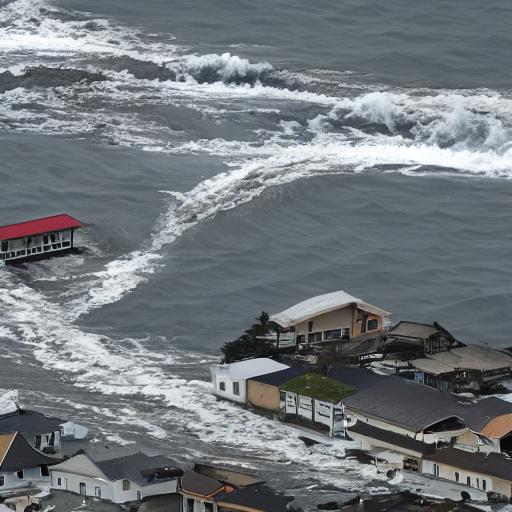Around 18,500 people lost their lives in the terrible tsunami that hit northeast Japan in 2011. Since that time, the country’s attention has been on averting a situation like that in the future.
New research from the RIKEN Prediction Science Laboratory has employed machine learning to precisely anticipate tsunami impacts in under one second.
The primary benefit of their approach is forecast speed, which is essential for early warning, according to the study’s principal author and RIKEN scientist Iyan Mulia.
The projections from conventional tsunami modeling come too late—after 30 minutes. However, their model can anticipate outcomes in only seconds.
150 stations offshore
The coast currently has the greatest sensor network in the world to track the movement of the ocean floor in order to do this. This network, which consists of about 150 offshore sites, collaborates to deliver tsunami early warnings.
However, the data produced by the sensors must be transformed into tsunami heights and extents along the coastline in order for the system to work properly.
This typically calls for the solution of challenging nonlinear equations, which can take up to 30 minutes on a desktop computer. It goes without saying that this does not provide them with adequate time to flee.
The RIKEN AI model is essential to saving lives because of this. It enables people to move away from where the tsunami will impact with at least a 30-minute head start.
The RIKEN team evaluated their machine-learning system with 480 more tsunami scenarios and three genuine tsunamis after training it with more than 3,000 computer-generated tsunami incidents.
Accurate for any time-sensitive disaster
They discovered that their model, which was based on machine learning, could achieve equal accuracy with just 1% of the computational cost of conventional methods. They now assert that their model would be applicable to any natural calamity with a deadline.
The concept can be used for any type of disaster prediction if there is a tight time window, Mulia continued.
He currently utilizing machine learning to predict storm surges.
In February 2021, RIKEN and Fujitsu created a potent artificial intelligence (AI) program that could anticipate the flooding brought on by a tsunami in real time. The fastest supercomputer in the world, Fugaku, was employed as the computing platform for the creation of the new tsunami prediction technology.
Although the model had to be trained using the enormous computing power of Fugaku, it was built to be loaded onto normal PCs and can make predictions in a matter of seconds.
Researchers developed a novel technique to detect tsunamis in December 2021 that uses the magnetic fields that tsunamis produce as they move across the conductive water of the ocean. These magnetic fields can be noticed a few minutes before the sea level rises, providing some extra time for action that could save lives.
Although these inventions are remarkable, they just fall short of the most recent work from RIKEN. The strategy is currently only reliable for significant tsunamis that are higher than around 1.5 metres. For lesser tsunamis, Mulia and his group are currently striving to increase its accuracy.








